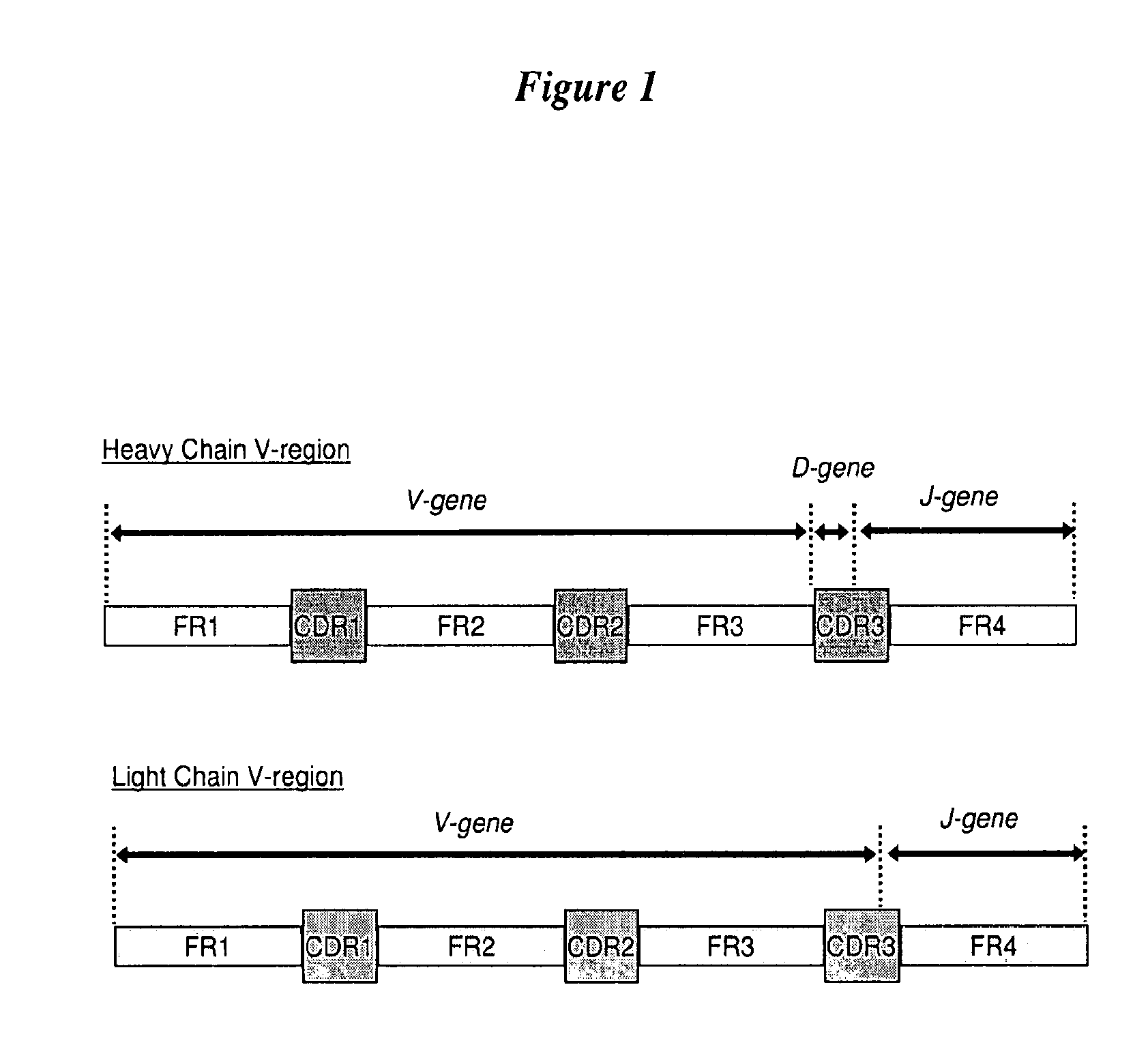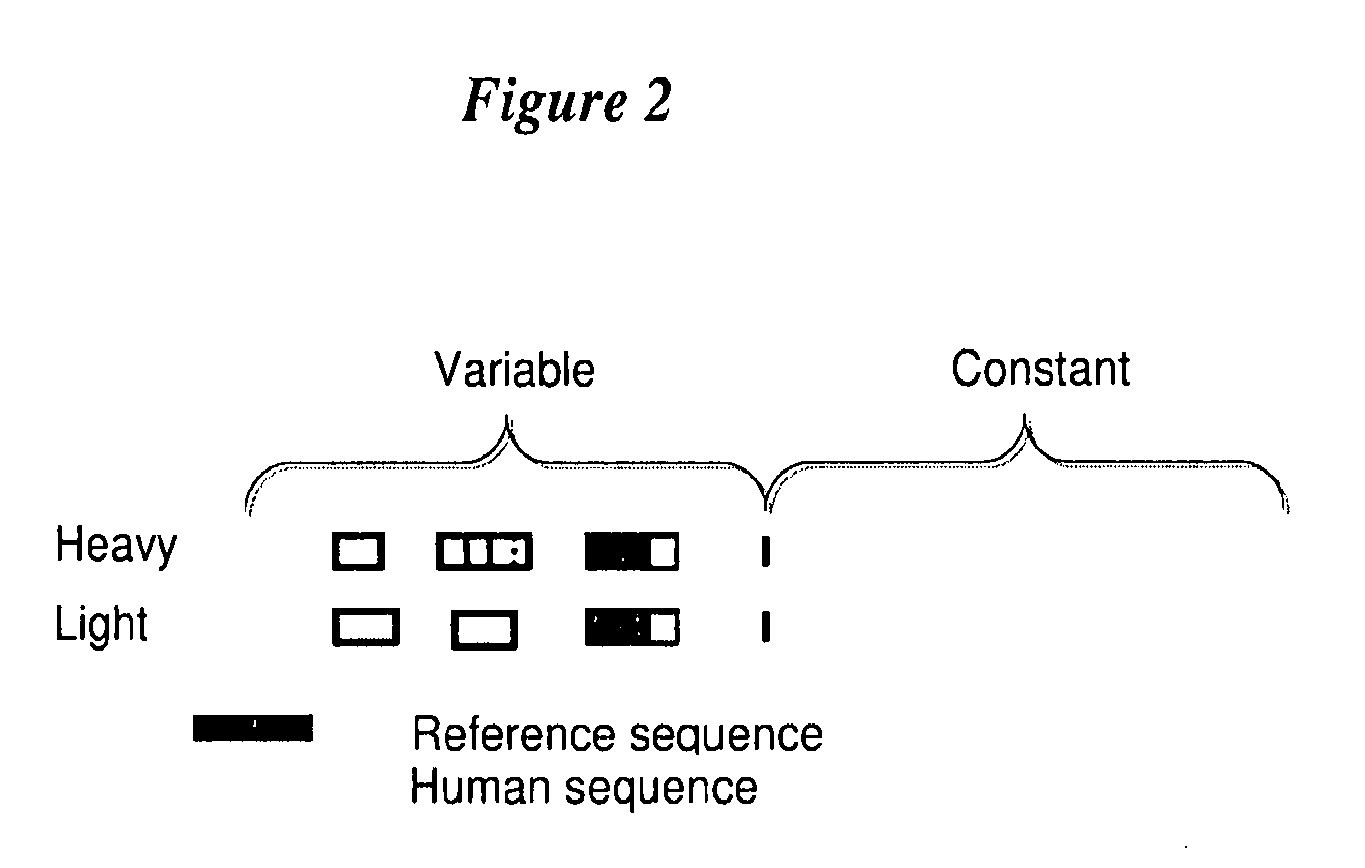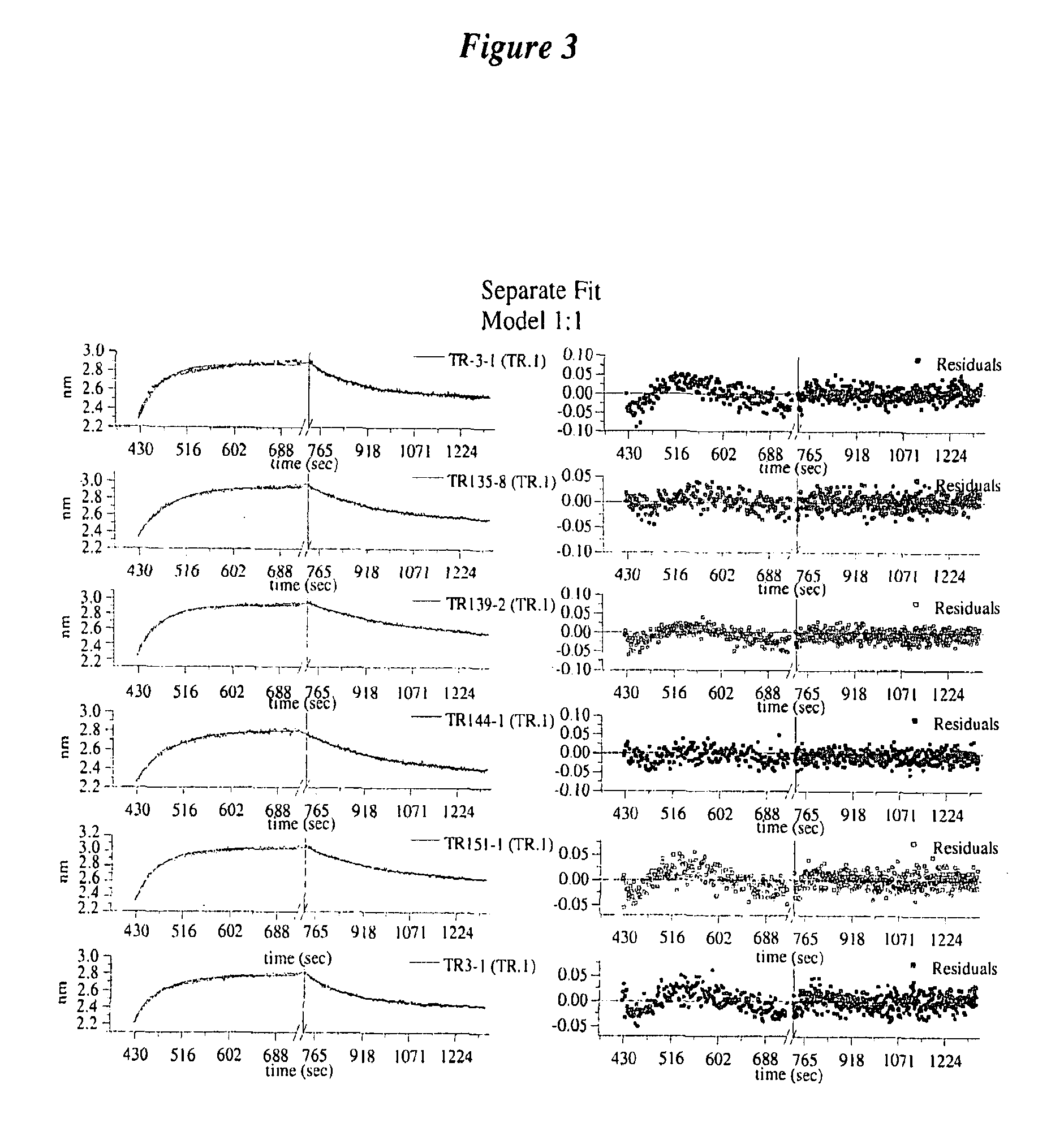Anti-TrkB antibodies
a technology of tyrosine receptor and binding molecule, which is applied in the field of anti-trkb antibodies, can solve the problems of increased vulnerability to infection, diabetic complications of blindness, kidney failure, tissue damage, etc., and achieve the effect of reducing severity, preventing or ameliorating
- Summary
- Abstract
- Description
- Claims
- Application Information
AI Technical Summary
Benefits of technology
Problems solved by technology
Method used
Image
Examples
example 1
[0205]The following example provides the construction and screening of anti-TrkB antibodies with substantial amino acid sequence identity to human germline V-region sequences.
Methods
Sub-Cloning of V-Regions
[0206]The V-regions were sub-cloned from the originating monoclonal antibody A 10F18.2. PCR was used to amplify the V-genes of the V-heavy and V-kappa regions and incorporate restriction enzyme sites suitable for cloning into expression vectors. V-regions were cloned as Fab fragments and expressed in E. coli from expression vectors. The reference Fab was tested for TrkB-antigen binding and is referred to as TR3-1.
[0207]The V-regions were also cloned into IgG expression vectors. Using PCR amplification and primers with appended restriction sites, the Vh regions were amplified and cloned into an expression vector containing the human IgG1 constant region and conferring ampicillan and neomycin resistance. Using PCR amplification and primers with appended restriction sites, the Vk reg...
PUM
| Property | Measurement | Unit |
|---|---|---|
| concentration | aaaaa | aaaaa |
| equilibrium dissociation constant | aaaaa | aaaaa |
| equilibrium dissociation constant | aaaaa | aaaaa |
Abstract
Description
Claims
Application Information
 Login to View More
Login to View More - R&D
- Intellectual Property
- Life Sciences
- Materials
- Tech Scout
- Unparalleled Data Quality
- Higher Quality Content
- 60% Fewer Hallucinations
Browse by: Latest US Patents, China's latest patents, Technical Efficacy Thesaurus, Application Domain, Technology Topic, Popular Technical Reports.
© 2025 PatSnap. All rights reserved.Legal|Privacy policy|Modern Slavery Act Transparency Statement|Sitemap|About US| Contact US: help@patsnap.com



